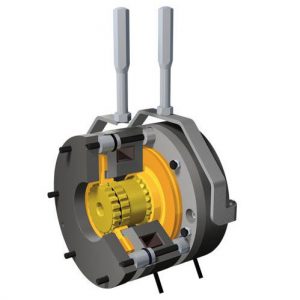Brake assembly parts are not in proper working condition
- Causes
- Burnt lining, loose screws, uneven lever, insufficient clearance, scratching etc. needs rectification
- Careless installation or mishandling during maintenance
- Over or under lubrication

Arcing in brake contactor
- Diagnostic/testing method
The cleanliness of the brake lining and brake drum, lubrication of brake pins and condition of brake electric contacts shall be inspected while cut off the power. With power on, the brake shall be operated in smooth and quiet condition.
Clearance between the brake shows and brake drum has to be as small as possible, and ensuring no rise in temperature on the surface of the brake drum after the elevator has been operated some time shall be checked (SS550).
- Good practices
The braking system shall automatically operate in the case of loss of main power supply and loss of supply for the control circuits. The electro-mechanical brake (friction type) or other braking system (electrical type) may be use for the braking system.
The brake shall capable to stop the machine when the car is travelling downward at rated speed with an additional of 25% of rated load (EN81-1)
- Corrections
The invention of electromagnetic safety brakes has improved the safety and reliability of elevator operation. When the magnetic coil is energised, a magnetic field is built up which attracts the armature disk against the force of the springs, releasing the rotor with the friction linings.
Therefore, the force stored in the thrust springs then generates the braking torque and the brake is released. This operation is closed in a de-energised condition, which is the fail-safe principle, obeyed by the electromagnetic safety brakes ROBA-stop.

Electromagnetic safety brake for elevator system [17]